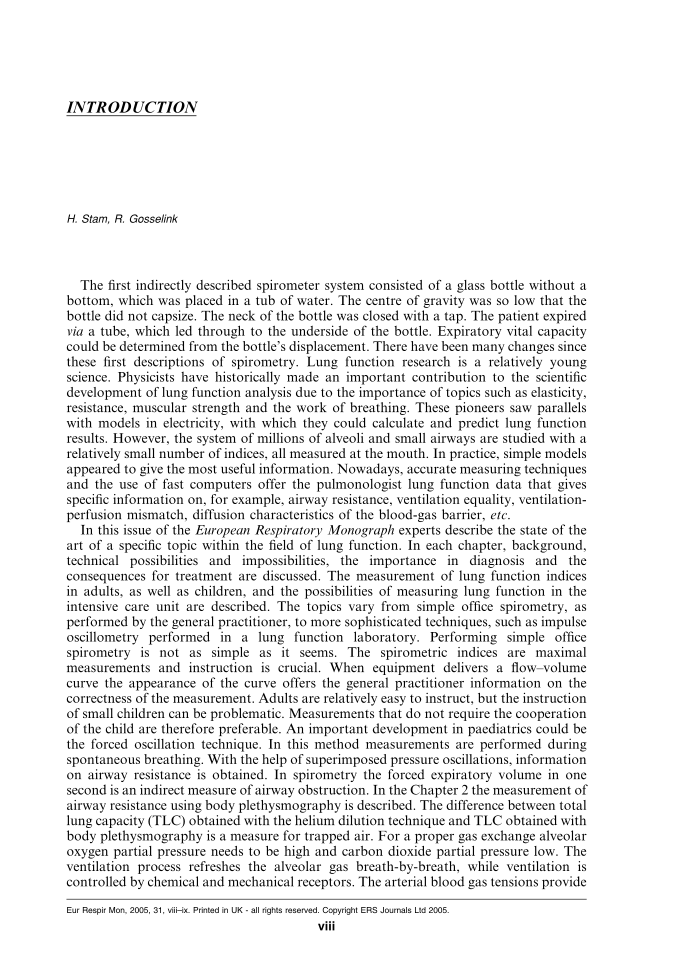INTRODUCTION H. Stam, R. Gosselink The first indirectly described spirometer system consisted of a glass bottle without a bottom, which was placed in a tub of water. The centre of gravity was so low that the bottle did not capsize. The neck of the bottle was closed with a tap. The patient expired via a tube, which led through to the underside of the bottle. Expiratory vital capacity could be determined from the bottle’s displacement. There have been many changes since these first descriptions of spirometry. Lung function research is a relatively young science. Physicists have historically made an important contribution to the scientific development of lung function analysis due to the importance of topics such as elasticity, resistance, muscular strength and the work of breathing. These pioneers saw parallels with models in electricity, with which they could calculate and predict lung function results. However, the system of millions of alveoli and small airways are studied with a relatively small number of indices, all measured at the mouth. In practice, simple models appeared to give the most useful information. Nowadays, accurate measuring techniques and the use of fast computers offer the pulmonologist lung function data that gives specific information on, for example, airway resistance, ventilation equality, ventilation- perfusion mismatch, diffusion characteristics of the blood-gas barrier, etc. In this issue of the European Respiratory Monograph experts describe the state of the art of a specific topic within the field of lung function. In each chapter, background, technical possibilities and impossibilities, the importance in diagnosis and the consequences for treatment are discussed. The measurement of lung function indices in adults, as well as children, and the possibilities of measuring lung function in the intensive care unit are described. The topics vary from simple office spirometry, as performed by the general practitioner, to more sophisticated techniques, such as impulse oscillometry performed in a lung function laboratory. Performing simple office spirometry is not as simple as it seems. The spirometric indices are maximal measurements and instruction is crucial. When equipment delivers a flow–volume curve the appearance of the curve offers the general practitioner information on the correctness of the measurement. Adults are relatively easy to instruct, but the instruction of small children can be problematic. Measurements that do not require the cooperation of the child are therefore preferable. An important development in paediatrics could be the forced oscillation technique. In this method measurements are performed during spontaneous breathing. With the help of superimposed pressure oscillations, information on airway resistance is obtained. In spirometry the forced expiratory volume in one second is an indirect measure of airway obstruction. In the Chapter 2 the measurement of airway resistance using body plethysmography is described. The difference between total lung capacity (TLC) obtained with the helium dilution technique and TLC obtained with body plethysmography is a measure for trapped air. For a proper gas exchange alveolar oxygen partial pressure needs to be high and carbon dioxide partial pressure low. The ventilation process refreshes the alveolar gas breath-by-breath, while ventilation is controlled by chemical and mechanical receptors. The arterial blood gas tensions provide Eur Respir Mon, 2005, 31, viii–ix. Printed in UK - all rights reserved. Copyright ERS Journals Ltd 2005. viii
